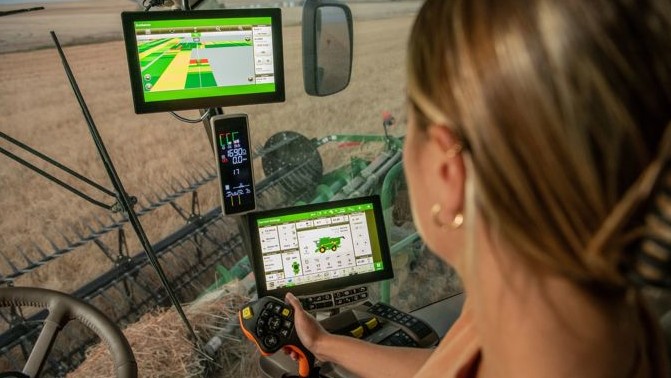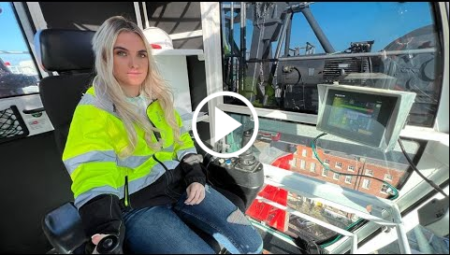In an era where precision agriculture and smart farming are no longer just buzzwords, John Deere’s JDLink has emerged as a pivotal tool for modern farmers and agricultural businesses. This article aims to cover all the potential questions you might have about JDLink, ensuring you get a thorough understanding of its capabilities, benefits, and implications for your farming operations.
What is JDLink?
JDLink is John Deere’s advanced telematics system designed to enhance the management of agricultural equipment. It allows users to remotely monitor and manage their machinery, providing real-time data on equipment location, usage, and performance. This connectivity fosters increased efficiency, productivity, and uptime, making it an essential component of modern precision agriculture.
How Does JDLink Work?
JDLink operates through a combination of hardware and software installed on John Deere machinery. The system collects data from various sensors and systems on the equipment and transmits it via cellular networks to a cloud-based platform. Users can then access this data through the JDLink web portal or mobile app, allowing for real-time monitoring and management of their equipment from anywhere in the world.
Key Features of JDLink
1. Real-Time Data Monitoring
JDLink provides real-time insights into the operational status of your equipment. This includes data on engine hours, fuel usage, and machine location. Such information is crucial for ensuring optimal performance and timely maintenance.
2. Remote Diagnostics
One of the standout features of JDLink is its ability to perform remote diagnostics. Technicians can access diagnostic trouble codes and machine parameters remotely, which helps in diagnosing issues without the need for on-site visits. This capability significantly reduces downtime and repair costs.
3. Geofencing and Alerts
JDLink allows users to set up geofences, which are virtual boundaries around specific geographic areas. You can receive alerts if your equipment moves outside these boundaries, providing an extra layer of security and helping in asset management.
4. Performance Analytics
JDLink aggregates data to provide detailed analytics on equipment performance. This includes insights into fuel efficiency, operator behavior, and machine utilization. By analyzing these metrics, farmers can make informed decisions to improve operational efficiency and reduce costs.
Benefits of Using JDLink
1. Enhanced Equipment Utilization
With JDLink, you can ensure that your machinery is used efficiently. The system provides detailed usage reports, helping you identify underutilized equipment and optimize your fleet management. This leads to better asset utilization and cost savings.
2. Proactive Maintenance
JDLink’s remote diagnostics and monitoring capabilities allow for proactive maintenance. You can schedule maintenance based on actual usage and wear and tear, rather than relying on fixed intervals. This approach not only extends the lifespan of your equipment but also prevents unexpected breakdowns.
3. Improved Decision Making
The data provided by JDLink enables better decision-making by offering insights into various aspects of your operations. Whether it’s deciding when to replace a piece of equipment or how to optimize fuel usage, the information from JDLink can guide your decisions effectively.
4. Increased Security
Geofencing and location tracking features help in monitoring the movement of your equipment. You can quickly detect unauthorized use or theft, providing peace of mind and enhancing the security of your assets.
How to Get Started with JDLink
1. Setting Up JDLink
To get started with JDLink, you need to install the necessary hardware on your John Deere equipment. This typically involves fitting a telematics control unit (TCU) that collects and transmits data. John Deere offers various packages, and your local dealer can assist with the installation process.
2. Accessing JDLink
Once the hardware is installed, you can access JDLink through the web portal or the mobile app. You’ll need to create an account and link your equipment to the platform. The interface is user-friendly, allowing you to navigate through various dashboards and reports easily.
3. Subscription Plans
JDLink operates on a subscription basis, with different plans available depending on your needs. The basic plan offers essential monitoring and management features, while more advanced plans provide enhanced analytics and remote diagnostic capabilities. Discussing your specific requirements with a John Deere dealer can help you choose the right plan.
JDLink and Data Privacy
1. Data Ownership
One of the common concerns about telematics systems like JDLink is data privacy. With JDLink, the data generated by your equipment is owned by you. John Deere provides the platform to access and analyze this data but does not own it. This ensures that your data remains secure and confidential.
2. Data Security
John Deere takes data security seriously. JDLink uses robust encryption and security protocols to protect your data from unauthorized access. Regular updates and security patches are also applied to keep the system secure against emerging threats.
JDLink Compatibility
1. Compatible Equipment
JDLink is compatible with a wide range of John Deere equipment, including tractors, combines, and sprayers. The system is designed to be flexible and can be retrofitted to older models that support telematics. This ensures that you can benefit from JDLink regardless of the age or type of your equipment.
2. Integration with Other Systems
JDLink can integrate with other John Deere systems, such as Operations Center, to provide a comprehensive view of your agricultural operations. This integration allows for seamless data flow between systems, enhancing the overall efficiency and effectiveness of your management processes.
Challenges and Considerations
1. Connectivity Issues
JDLink relies on cellular networks to transmit data, which can be a challenge in areas with poor network coverage. However, John Deere is continuously working to improve connectivity solutions, including partnerships with satellite providers to extend coverage in remote areas.
2. Cost Considerations
While JDLink offers significant benefits, it also comes with costs related to hardware installation and subscription fees. It’s important to weigh these costs against the potential savings and efficiency gains. For many farmers, the investment in JDLink pays off through improved equipment management and reduced operational costs.
Future of JDLink
The future of JDLink looks promising, with John Deere continually enhancing the system’s capabilities. The integration of artificial intelligence (AI) and machine learning (ML) is expected to provide even more advanced analytics and predictive maintenance features. Additionally, expanding connectivity options and improving data integration will make JDLink an even more powerful tool for precision agriculture.
Conclusion
JDLink from John Deere is a game-changer for modern agriculture, providing farmers with the tools they need to manage their equipment more effectively. From real-time monitoring and remote diagnostics to performance analytics and security features, JDLink offers comprehensive solutions that drive efficiency and productivity. As technology continues to evolve, JDLink will play an increasingly vital role in the future of farming, helping farmers make better decisions, reduce costs, and optimize their operations.
Whether you’re new to telematics or looking to upgrade your current systems, JDLink offers a robust platform that can transform the way you manage your agricultural machinery. By embracing this technology, you can stay ahead of the curve and ensure your farming operations are more efficient, secure, and profitable.










